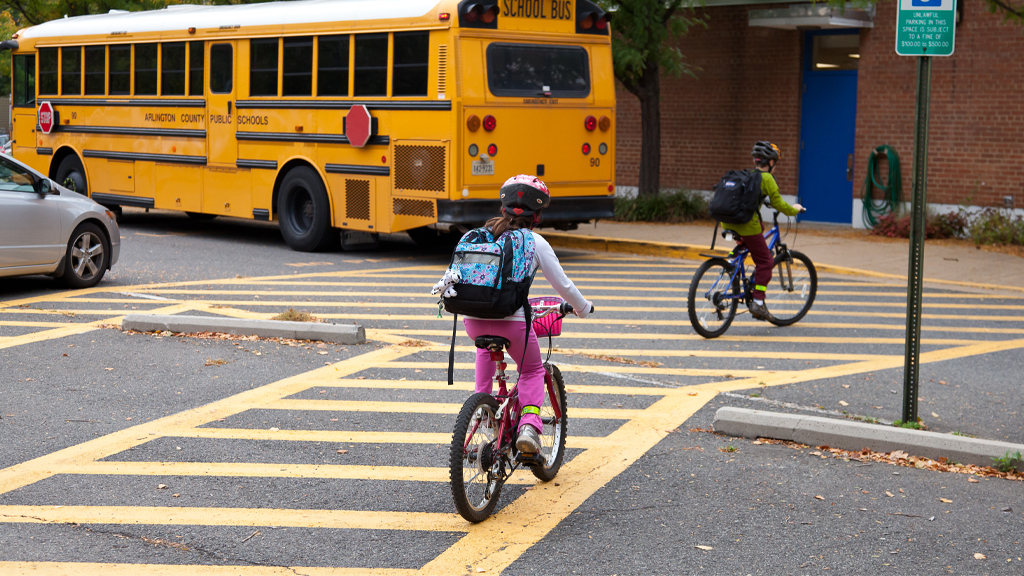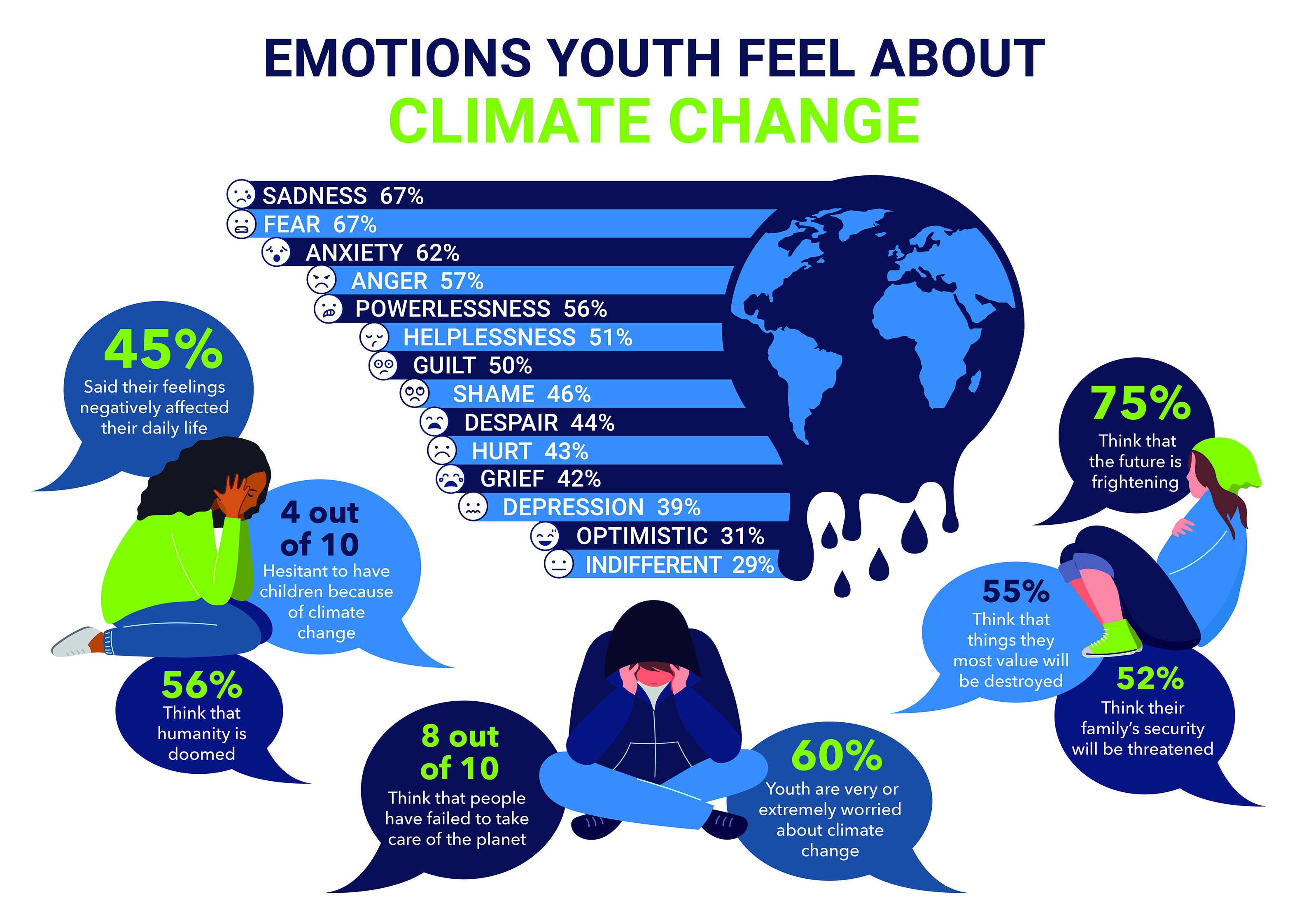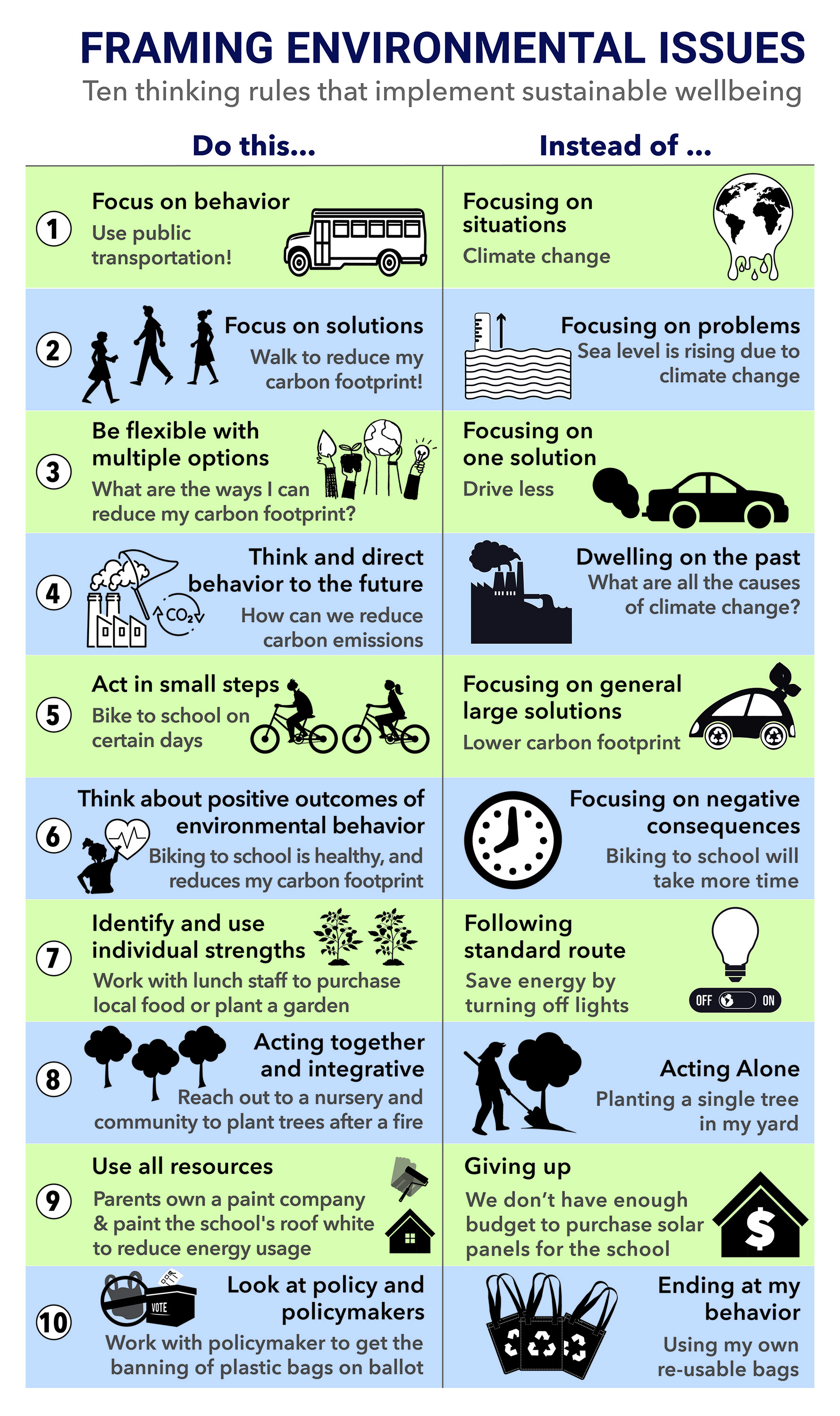Brief
Beyond Doom and Gloom: Teaching Climate Change to Foster Empowerment
Connected Science Learning May–June 2023 (Volume 5, Issue 3)
By Alicia Christensen, Courtney Welton-Mitchell, Anne U. Gold, Leah James, and Lian Zeitz

The impacts of a changing climate are felt around the world. Headlines regularly emphasize devastating natural hazards resulting in catastrophe. As a result many people—especially young people—feel overwhelmed, powerless, sad, angry, and anxious—reactions that can lead to disengagement and avoidance (Figure 1). It is important to recognize these common mental health effects as youth learn about global warming and human impacts on the environment. To engage young people with a climate change curriculum that encourages hope and innovation rather than helplessness, educators are encouraged to teach content in new ways. Youth must be supported to explore their emotions and be inspired to step up rather than shut down.

Click here for a larger image.
Teachers, caregivers, and other role models play a key role in supporting youth learning about climate change. However, some adults may also struggle with feelings of hopelessness in the face of climate change, making it difficult for them to teach content in a manner that is conducive for youth. Ideally, adults will "put on their own oxygen mask first" by taking steps to learn best practices for mental health–informed climate education, including acknowledging and addressing their own emotions related to climate change (Brymer et al. 2021). Educators can consider joining the Climate Literacy and Energy Awareness Network’s (CLEAN) weekly teleconference calls and email list, or climate support groups through organizations like Climate Change Café or the Good Grief Network.
CLEAN offers a thoughtfully curated collection of evidence-based strategies, websites, and lesson plans for educators and other stakeholders to promote the mental well-being of young people as they learn about the impact of climate change in both formal and informal educational settings. Educators can also access webinars on climate mental health and a CLEAN-developed and teacher-tested Climate Mental Health Activity Guide.
Key Strategies
Listen and Validate Youth’s Feelings to Create Community and Connection: When teaching about climate change, creating a safe space for youth to share how they feel is one of the most effective ways to address climate-related distress, including feelings of hopelessness. Listening with compassion and authentic curiosity can encourage youth to open up and further explore their feelings. Creating a supportive environment where youth can share their thoughts with peers around climate change topics can build trust and a sense of belonging and combat feelings of isolation.
Encourage Youth to Take Action: Encouraging youth to take solution-oriented community action promotes social connection, supports collaborative problem solving, nurtures a sense of personal and collective efficacy, and builds self-esteem and leadership skills. For younger learners, too much awareness of environmental tragedies without the means to do something about the problem can discourage environmental behavior (Sobel 2007). Keep action local and place-based, and focus on addressing one small part of the climate crisis at a time. Solutions that are student guided, personally relevant, and nurture personal agency are best suited to engage and empower students. Include diverse voices to successfully imagine a sustainable future and take collective climate action.
Build Awareness of Climate Change’s Impacts on Marginalized Communities: People from historically marginalized communities disproportionately experience the impacts of climate change. Structural racism and other forms of oppression have placed some groups in higher-risk environments, including risks resulting from natural hazards, air pollution, and hotter temperatures with limited access to cooling options (such as shade from trees). There must also be recognition that communities experiencing the greatest impacts of climate change are likely experiencing more grief than others (Burton 2020). In light of this, climate justice must be centered in every discussion about climate change, including exploration of links between climate change and mental health.
Incorporate a Trauma-Informed Approach: Climate change impacts, such as more intense wildfires, floods, droughts, and hurricanes, can be life-threatening and result in significant damages, causing trauma and stress-related mental health reactions for individuals, families, and communities. Creating a trauma-informed learning environment while teaching about climate change will reduce the potential for harm and increase the effectiveness of learning. Trauma-informed strategies include:
- learning to recognize trauma and stress-related reactions and potential triggers;
- creating a safe, caring, and welcoming environment;
- building trust through transparency;
- identifying and reinforcing examples of positive peer support;
- acknowledging strengths;
- encouraging youth voice and choice; and
- challenging stereotypes and biases (SAMHSA 2014).
Develop Social, Emotional, Self-Regulation, and Positive Coping Skills: Start by supporting youth in identifying, expressing, and managing their feelings as they learn about climate-related impacts (CASEL n.d.). Reassure students that it is normal to feel these emotions. Encourage youth to have self-compassion and find balance by giving themselves and others permission to enjoy their lives—they can't solve everything all the time. Support students in tolerating ambiguity around climate topics by encouraging them to ask questions, stay calm and in the moment, try on other perspectives about future possibilities, assess risks, rely on what they do know, use their creativity to explore new ideas, and reflect on what they are grateful for in our world. Support self-care through meditation, breathing exercises, visualizations about a resilient future, and time in nature.
Guide Youth to Move Through Grief: Everyone has different ways of handling stress, anxiety, and loss as they learn about or experience the impacts of climate change (Bryant 2019). Understanding the stages of grief in the context of climate change (specifically climate denial, climate anger, climate bargaining, climate depression, and climate acceptance) can help youth empathize with others and consider their own process. To support youth in their grief, encourage them to admit there is a problem and be curious about their feelings, then work with them to label and normalize these reactions. Redirect focus to “what they can do” moving forward rather than “what has or has not been done.” Ask them to be aware of varying points of view, encourage them to look for beauty and meaning, practice self-care, and accept support.
Cultivate Hope and Resilience: Hope is a teachable skill and is a foundational element of resilience (Belfer et al. 2022). Developing hope can support physical and mental wellness, increase social connection, combat anxiety and depression, and improve the overall quality of life. Frame environmental education and related problem-solving behaviors in a positive light, emphasizing positive examples of change and what can be done in the future (Figure 2).

Finally, to support hope, emphasize outdoor experiences that encourage a connection with nature and support youth in coping with the stress associated with a changing planet (Chawla 2021). Strategies to promote connection with nature and hope include: Providing opportunities to experience nature; encouraging action for the environment; pointing out examples of people who care for nature; and helping students gain comfort, confidence, and agency in nature. Youth who feel hopeful and empowered are more likely to engage with the challenges posed by climate change in a positive manner, including throwing their energy behind solution-focused community action projects with peers.
With awareness and planning, educators and others can move beyond doom and gloom to teach climate change to youth in a manner that fosters empowerment. Visit CLEAN’s web pages to access a curated, peer-reviewed collection of innovative and feasible educator resources, including climate and energy lesson plans, videos, visualizations, and mental health resources.
Alicia Christensen is an Education & Outreach Associate at the University of Colorado Boulder, Cooperative Institute for Research in Environmental Sciences in Boulder, Colorado. Courtney Welton-Mitchell is a Clinical Assistant Professor at the University of Colorado, Colorado School of Public Health in Denver, Colorado. Anne U. Gold is an Education & Outreach Director at the University of Colorado, Cooperative Institute for Research in Environmental Sciences in Boulder, Colorado. Leah James is a Research Associate at the University of Colorado Boulder Natural Hazards Center in Boulder, Colorado. Lian Zeitz is a Co-founder of the Climate Mental Health Network in Washington D.C.
citation: Christensen, A., C. Welton-Mitchell, A.U. Gold, L. James, and L. Zeitz. 2023. Beyond doom and gloom: Teaching climate change to foster empowerment. Connected Science Learning 5 (3). https://www.nsta.org/connected-science-learning/connected-science-learning-may-june-2023/beyond-doom-and-gloom-teaching
Climate Change Middle School Elementary High School Informal Education

